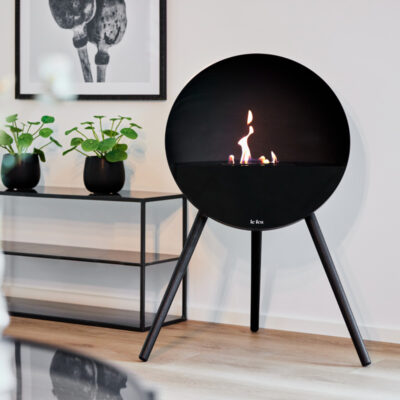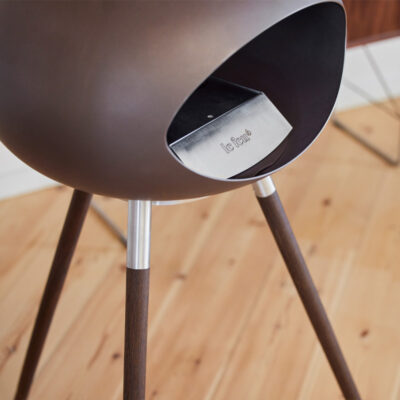
Le Feu – Scandinavian Design Meets Sustainable Warmth
The vision behind Le Feu is to create simple, eco-friendly, and contemporary fireplaces that serve as a sustainable alternative to traditional gas and wood-burning models, both of which come with significant environmental drawbacks.
Eco-Friendly Innovation
Le Feu fireplaces are powered by bioethanol, an eco-friendly fuel that is 100% CO2-neutral. Offering real flames and warmth without the need for a chimney or electricity, they can burn for up to 6 hours, providing a practical and sustainable heating solution. Unlike traditional fuels, bioethanol emits no smoke, soot, or harmful gases, ensuring a cleaner choice for both indoor air quality and the environment.
By blending Scandinavian aesthetics with sustainability, Le Feu fireplaces become a natural focal point for any modern home, offering the ambiance and warmth of real flames without compromising the health of the planet.
The Science of Bioethanol
The production of bioethanol fuel begins with biomass, which can include organic materials like grass, hay, corn, sugar cane, or even wood chips. The process involves:
- Breaking down cellulose from plants into sugars using water, steam, and enzymes.
- Fermentation, where yeast and bacteria convert these sugars into ethanol (alcohol) and natural CO2.
- Distillation, which purifies the alcohol for use as bioethanol fuel.
This process is highly sustainable, ensuring that all by-products are repurposed: - CO2 is used in industries like soda production or dry ice manufacturing.
- Plant waste serves as animal feed for livestock.
The result is a fuel that is filtered and purified to at least 95% purity, ensuring a clean, efficient burn that avoids smoke or soot while protecting your biofireplace.
Sustainability Commitment
Le Feu’s bioethanol fireplaces reflect a commitment to green living by producing sustainable warmth that aligns with an eco-conscious lifestyle. From the sourcing of high-purity bioethanol to the Scandinavian-inspired designs, every aspect of Le Feu promotes minimal environmental impact.
By choosing Le Feu fireplaces, homeowners can embrace the ambiance of a real flame with the assurance of a sustainable and CO2-neutral solution.
Why in The Green Circle
Le Feu exemplifies the principles of sustainability, innovation, and eco-conscious design, making it a standout participant in The Green Circle 2025.
- CO2-Neutral Heating: Powered by 100% CO2-neutral bioethanol, Le Feu fireplaces provide a clean-burning solution that eliminates the need for electricity or chimneys, aligning with SDG 13 – Climate Action.
- Sustainable Fuel Production: The production of bioethanol follows a circular approach, where by-products like CO2 and plant waste are repurposed, supporting responsible consumption and production (SDG 12).
- Healthier Indoor Living: By eliminating smoke, soot, and harmful gases, Le Feu fireplaces promote good health and well-being for users, creating a safer and cleaner home environment (SDG 3).
- Scandinavian Aesthetics: Designed with a focus on timeless, sustainable materials, Le Feu integrates functional elegance into modern interiors, contributing to sustainable cities and communities (SDG 11).
Through its participation in The Green Circle, Le Feu showcases how design and technology can create sustainable solutions that respect both the environment and individual well-being (SDG 17 – Partnerships for the Goals).







